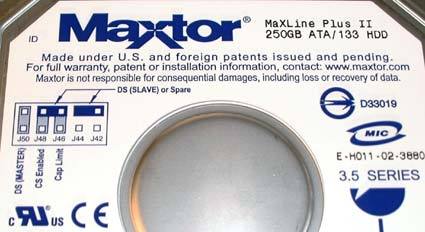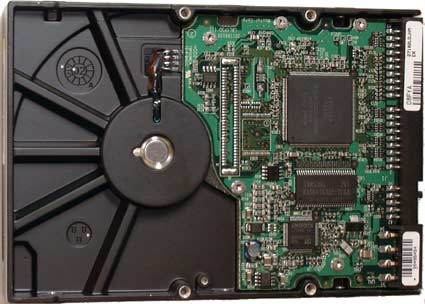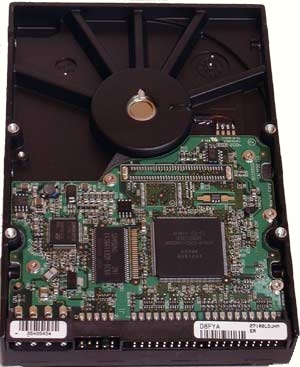Decision at 250 GB: Maxtor MaXLine Plus II vs. Western Digital WD2500JB
Maxtor MaXLine Plus II 7Y250P0
Maxtor offers two hard drive families for "near-line" applications. What this refers to is anything that does not have to satisfy the highest demands (thus, "near-line"). For example, this could indicate the rarely frequented file servers, large temporary volumes or fast backup volumes based on hard drives. Maxtor points out that the backup costs when using hard drives are not higher than when using tape drives, and the speed is much faster. This is easily understandable when you consider that the availability of backup data can, depending on its physical structure (and in comparison to streamers), be almost ideal. Of course, hard disks can't really replace tape drives or MO backups, since data security is inevitably reduced when in continuous operation: a hard drive is and will remain a mechanical component that will suffer from defects sooner or later.
The two hard drive families available from Maxtor are the MaXLine II and the MaXLine Plus II. The former is designed for capacity, working with 5,400 rpm and 2 MB cache, while the MaXLine Plus II is meant for high performance applications. The latter runs with 7,200 rpm and 8 MB cache, but it is only available with a 250 GB maximum. By comparison, the MaXLine II, which should be available soon, brings it up to 300 GB.
We've already mentioned its commendable three-year warranty. But what's being marketed as a purchasing argument was already the standard last summer. The emphasis on high quality is based on numbers: Maxtor claims an MTTF (Mean Time To Failure) of one million hours. However, this means that Maxtor certainly could have guaranteed full functionality for a period of five years. Consider, though, that Maxtor has bought a stake in the SCSI business with Quantum - that's a business that they would hardly want to risk damaging with a IDE product line that is "too strong."
The problem is that, in the mid-term, IDE drives always have a better chance in the lower and even the middle server segments - also with, or because of, Serial ATA. With the MaXLine series, Maxtor rises to the challenge while keeping a respectable distance from SCSI products. The positioning of the MaXLine Plus II can be viewed as a success, because its high reliability makes this type of drive appropriate for both simple and mid-level RAID arrays, as well as for high-load computers in continuous long-term operation or simple Web servers that can often be rented for a few dollars a month.
The label on the MaXLine II presents the facts: 250 GB, Ultra ATA/133 and a brief description of the jumpers (left).
Ultra ATA in the classic sense: IDE connection to the right, the jumpers in the middle.
Get Tom's Hardware's best news and in-depth reviews, straight to your inbox.
Current page: Maxtor MaXLine Plus II 7Y250P0
Prev Page Fat Storage: 250 GB Hard Drives From Maxtor And Western Digital Next Page Western Digital WD2500JB
Patrick Schmid was the editor-in-chief for Tom's Hardware from 2005 to 2006. He wrote numerous articles on a wide range of hardware topics, including storage, CPUs, and system builds.



